In the Field: Saving Cheetahs One Bushblok at a Time
In the Field: Saving Cheetahs One Bushblok at a Time
by SGE Immersion Team (06/16/2015)
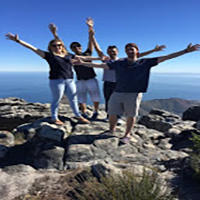
Working with the Cheetah Conservation Fund in Namibia to improve their Bushblok business, one of several businesses established to complement their holistic approach to saving cheetahs.
Written by Claudio Macedo (MBA ’16), Arran Bardige (MBA ’16), Enrique Questell (MEng ’15) and Alexandra Jostrom (MBA ’15).
The Cheetah Conservation Fund (CCF), based in Namibia, is the world’s leading organization for saving Cheetahs. Its approach to cheetah conservation is comprehensive. It includes mapping the locations of wild and captive cheetahs all around the world, helping countries develop their own conservation programs, monitoring genetic diversity and promoting education to various cheetah community stakeholders (e.g. farmers, governments, co-habitants).
In addition to the global NGO, the CCF has created several businesses that complement their holistic approach toward saving cheetahs. They currently produce goat’s milk products to better empathize with farmers in Namibia, train livestock guard dogs to keep cheetahs away from farms, and produce Bushblok – a fuel log made from thorn bushes.
Thorn bush encroachment is a national problem in Namibia.The bushes have overtaken much of the country’s vegetation, making it one of the greatest environmental threats to the region. The thorn bush overgrowth hascaused two major problems: 1) a dramatic reduction in ranching, the largest sector of Namibia’s economy, and 2) a decrease in cheetah habitat. Bushblok was created to combat this environmental and social challenge by producing a useful domestic energy source with the unwanted and harmful thorn bush.
As part of the Sustainable Global Enterprise Immersion, the CCF student team was tasked with improving Bushblok’s business model. To better understand the product’s market and its operations, the four team members,Claudio Macedo, Arran Bardige, Enrique Questell and Alexandra Jostrom, traveled to South Africa, the largest consumer of Bushbloks, and to Namibia, where CCF’s headquarters and the Bushblok factory are located.
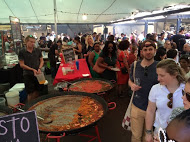
The first stop was Cape Town, South Africa, where the team interviewed a wide-range of current and potential consumers: local individuals,grocery stores, service stations and restaurants. The team’s strategy was to understand where the product is sold, when, how, to whom and for what purpose. Furthermore,the team had an extensive meeting with Bushblok’s primary distributor, which was particularly insightful in understanding the dynamics of the market and how the product could be more successful.
An important part of the project was to understand the braai(a local term for barbeque) market, which has been viewed as the target segment for Bushblok. Interviews with individuals and restaurants helped the team understand what makes an ideal braai fuel, their perceptions of Bushblok and how much they are willing to pay for it. In order to get the braai experience,the CCF SGE Team visited a wide-range of braai hot spots. The team wanted to observe first-hand the different styles of braai, the popular and the high-end,and how their respective chefs prepared the grills. Highlights included Mzoli’s, a traditional braai frequented mostly by locals; the Biscuit Mill market, a diverse food hall with many varieties and vendors; and Hussar Grill,a high-end restaurant.
During the three days in Cape Town, the CCF student team not only conducted over thirty interviews, but they were also able to enjoy the beauty of the Table Mountain, walks along the waterfront, and superb culinary experiences.
The next stop was Namibia where the team made their way to CCF, a four-hour drive north of Windhoek. At CCF the team met Brian, the operations manager, who gave an introduction to CCF’s programs and the research campus. Here,the team members had the opportunity to better understand the CCF’s mission and values.
During the stay at CCF headquarters the team engaged with Dr. Bruce Brewer, the project sponsor, and general manager for CCF and Bushblok. He was very supportive and introduced the team to important business and industry stakeholders. He also gave complete access to the Bushblok factory and its employees. This access allowed the team to analyze the company’s manufacturing process and gather important feedback from the factory and harvest employees.
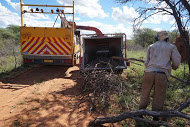
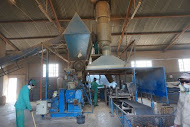
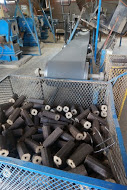
Dr. Bruce was also responsible for the team’s interaction with the cheetahs, which included feeding and watching them run. He also took the team on game drives on the reserve where they were able to observe giraffes, warthogs, jackals and many other exotic animals that made the visit to Africa incredibly memorable.
On the last day of the trip, the team traveled back to Windhoek, and on-route visited a competitor’s factory, and had a meeting with Germany’s GIZ’s De-bushing committee to understand the big-picture on the bush encroachment problem in Namibia and the government’s future plans toward thorn bush encroachment.
The team traveled the 35-hour journey back to Ithaca armed with tons of information in order to develop a recommendation for Bushblok. Our team left the two countries with great experiences that will last forever in our memories thanks to spectacular interactions with the cheetahs and extraordinary people.
A very special thank you to Dr. Bruce, Brian, Kate, Grace, Ian and Harold.
